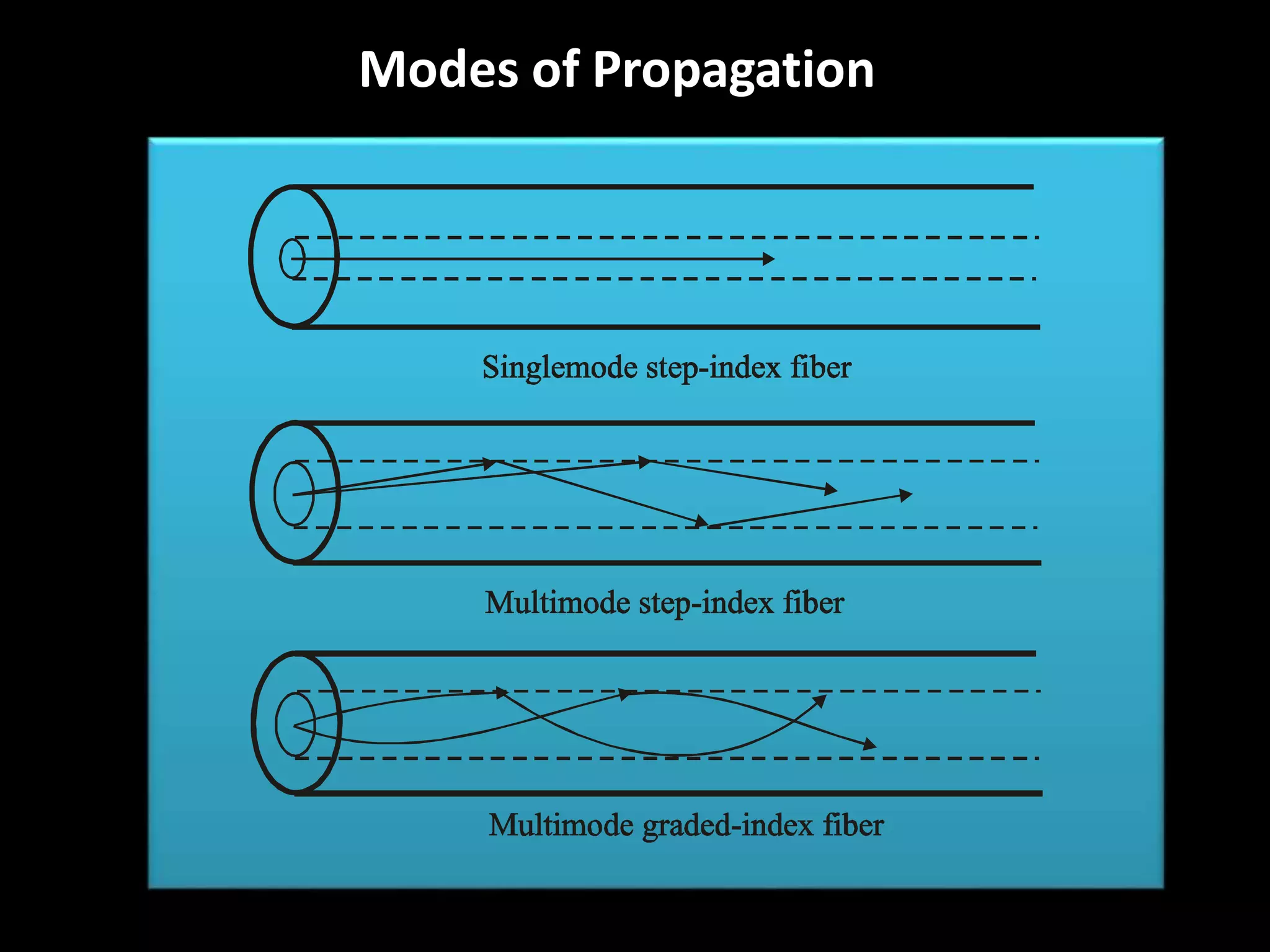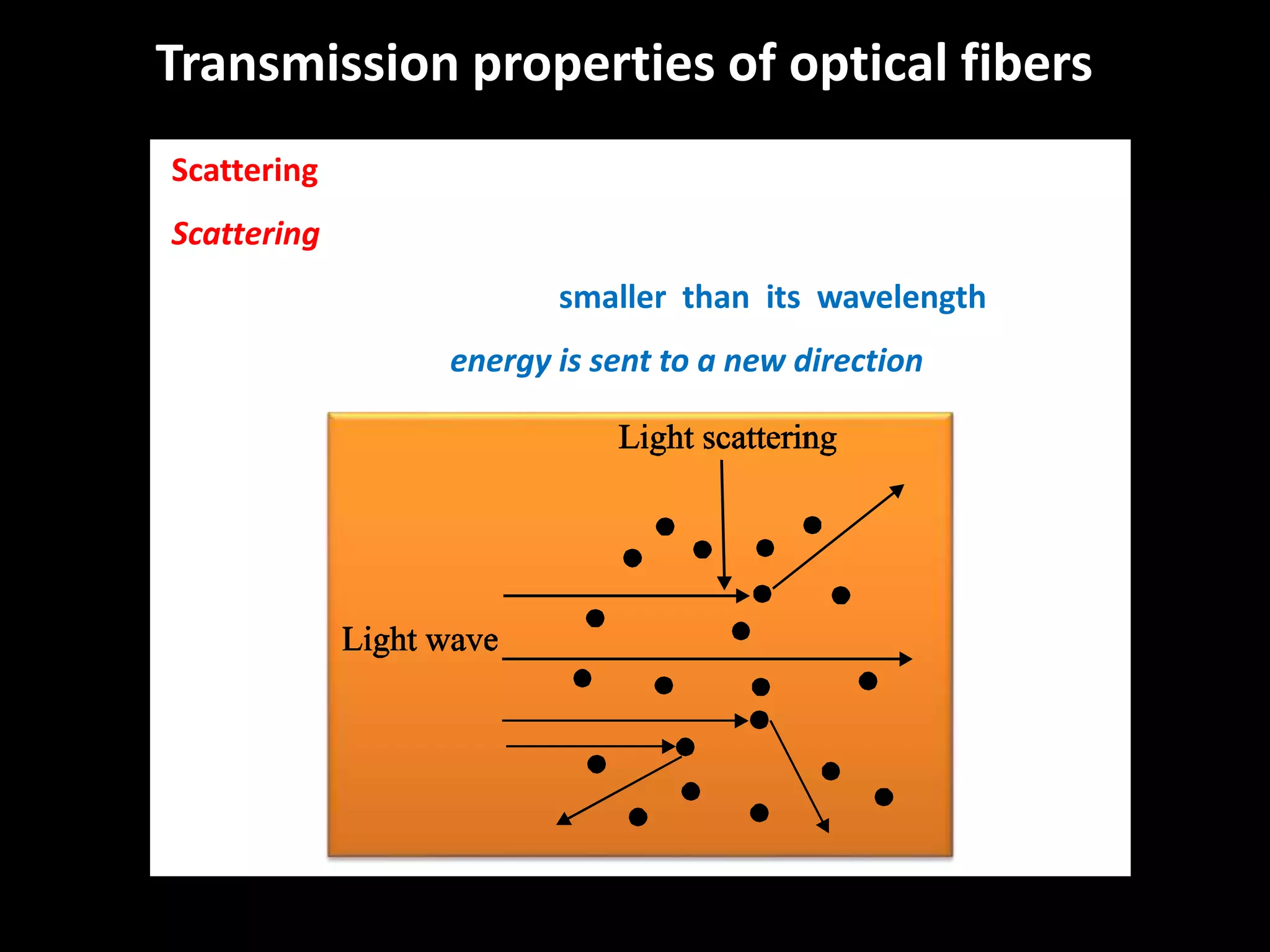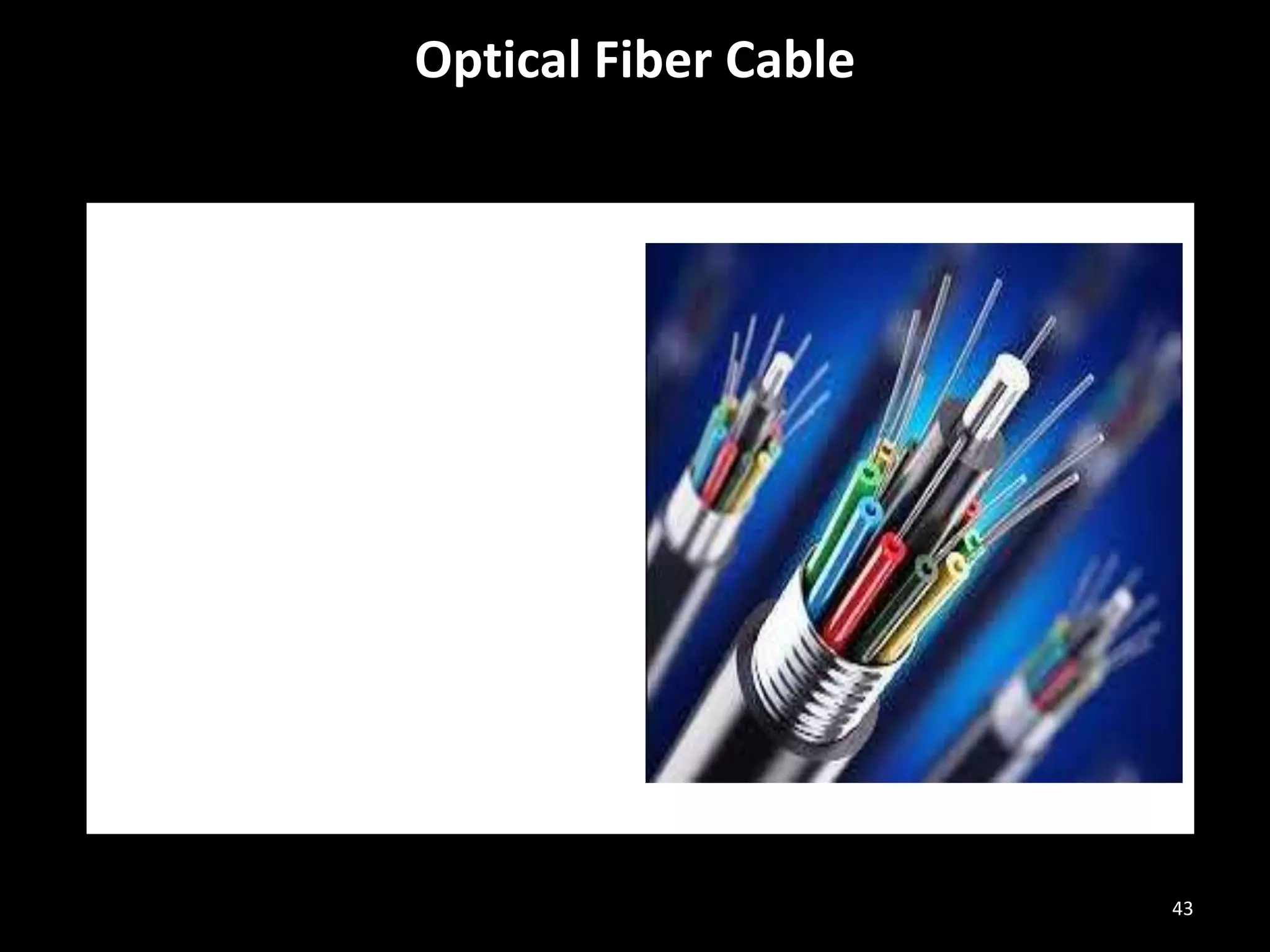The document discusses fiber optic communication systems, detailing the components and processes involved in transmitting signals via optical fibers. It explains the principles of light propagation, the types of fiber cables, their attenuation, and dispersion issues, as well as various applications in communications, medicine, and military uses. Furthermore, it highlights the advantages of fiber optics over traditional copper cables, such as higher data rates and lower power requirements.
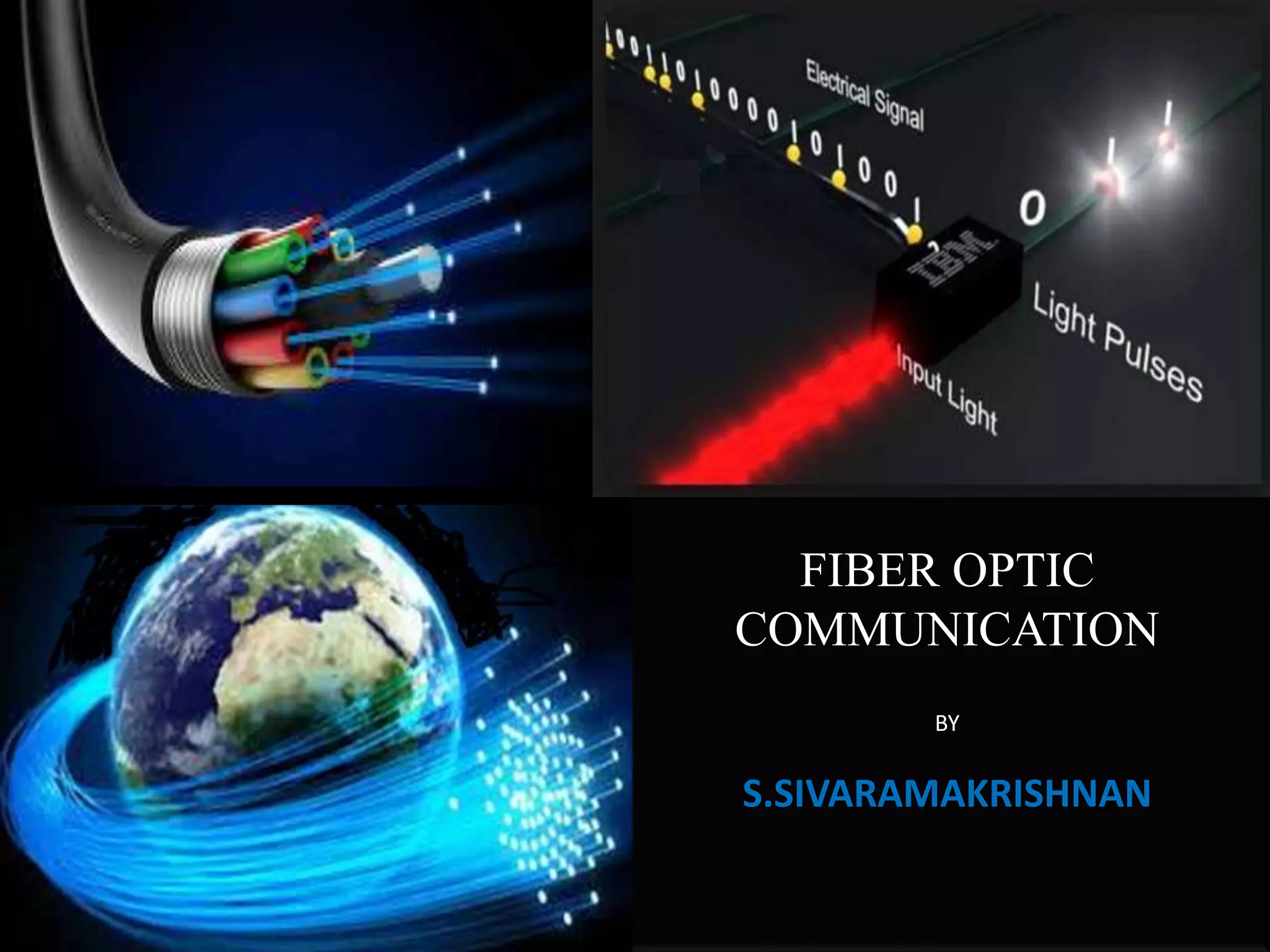
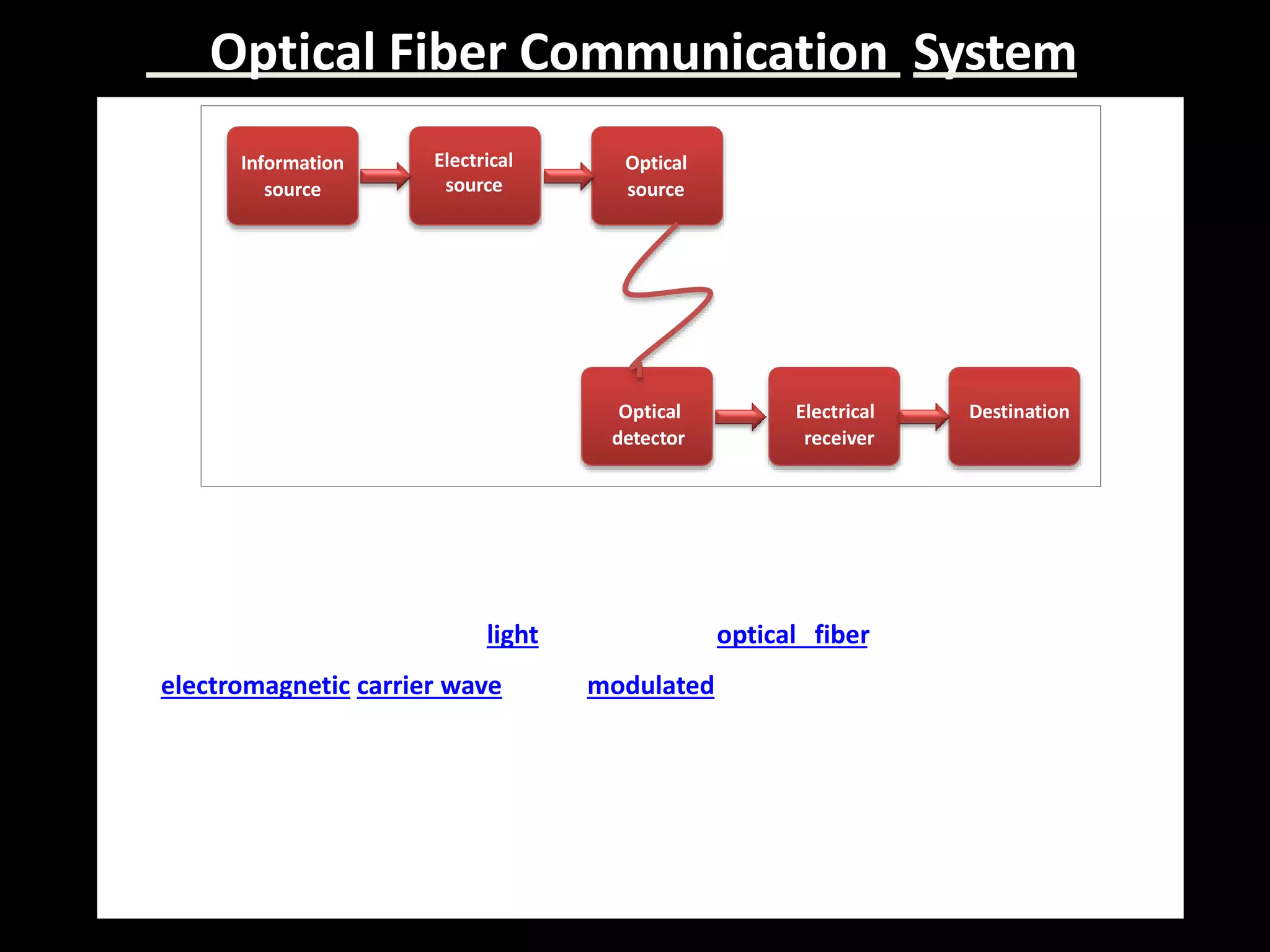
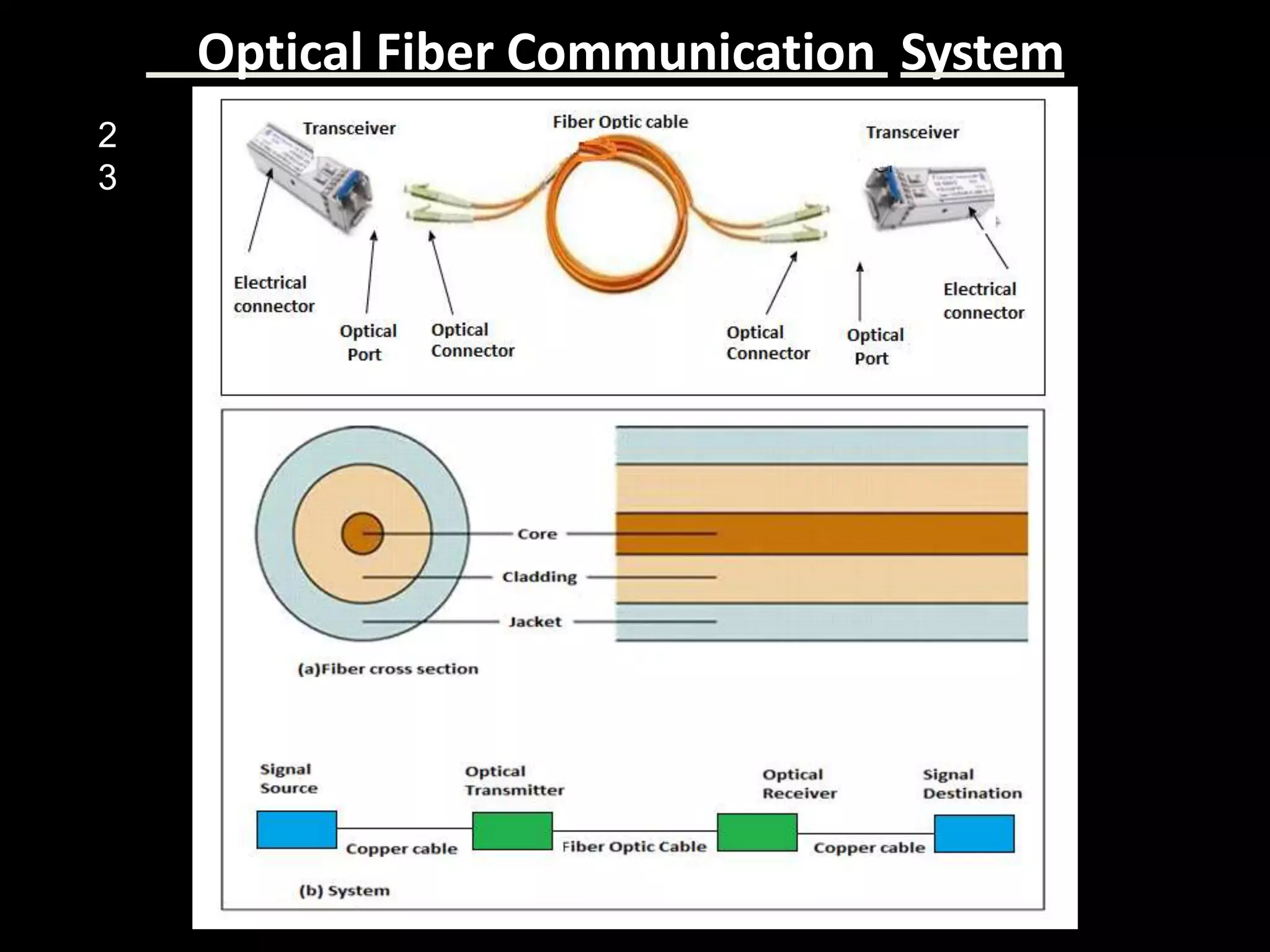
















![The acceptance angle is usually measured as the numerical
aperture (NA).
Numerical aperture
At the air-core interface,
n0sina = n1sin2 = n1sin(90 - C)
= n1cosC = n1(1 – sin2C)1/2
= n1[1 – (n2/n1)2]1/2 = (n1
2 - n2
2)1/2 = NA
The value of NA represents the light collecting ability.
Light propagation in optical fibers](https://image.slidesharecdn.com/fiberopticcommunication-200810131127/75/Fiber-optic-communication-20-2048.jpg)




